Deformation mechanism and optimum supporting structures in fault-bearing biased tunnels
-
摘要:
为探明复杂地质条件下隧道围岩变形机理,制定相适应的围岩变形控制技术,以清泉隧道为工程依托,对偏压隧道洞口段围岩变形进行分析,基于FLAC3D研究有无断层条件下不同支护状态围岩稳定性,明确围岩变形机理并提出控制措施。研究表明:(1)偏压效应下后行洞开挖扰动使上覆围岩与断层带相交层面张开、层间岩体弯折破裂,围岩应力重分布且断层破碎带进一步恶化,导致围岩变形严重;(2)软弱围岩自稳能力差,二次应力作用使得小净距隧道顶拱、边墙围岩产生可持续塑性变形,伴随着时间效应,对支护结构逐渐产生挤压变形,现有支护方案不能提供足够的支护强度和刚度以抵抗围岩变形;(3)提出的坡面锚索+深埋侧抗滑桩复合控制措施,可有效控制围岩变形,减弱断层破碎带恶化对围岩稳定性影响,数值计算结果与现场监测结果较为吻合。研究结果可为类似复杂地质条件下隧道围岩变形控制提供参考。
Abstract:To explore the deformation mechanisms of tunnel surrounding rock under complex geological conditions and develop appropriate technologies for controlling surrounding rock deformation, this study analyzes the deformation of surrounding rock at the mouth section of a biased tunnel, using the Qingquan Tunnel as a case study. Based on FLAC3D, stability of surrounding rock under different support conditions with and without faults is studied to clarify the deformation mechanism of the surrounding rock and propose effective control measures. The study shows that: (1) Excavation disturbances during backward hole excavation under biased conditions cause tensional interaction between the overlying surrounding rock and fault zones, leading to the interlayer rock body bending, rupturing, and stress redistribution, exacerbating the fragmentation of fault zones and resulting in significant surrounding rock deformation. (2) Weak surrounding rock exhibits limited self-stabilization capacity; secondary stress induces sustainable plastic deformation in small clear span tunnel roofs and sidewalls, gradually causing squeezing deformation in support structures over time. Existing support schemes fail to provide sufficient strength and stiffness to resist surrounding rock deformation. (3) Proposed composite control measures of slope surface anchors and deep-buried lateral anti-sliping piles effectively control surrounding rock deformation, mitigate the adverse impact of fractured fault zones on rock stability, and numerical calculation results align closely with on-site monitoring results. The findings provide valuable insights for deformation control of tunnel surrounding rock under similar complex geological conditions.
-
0. 引言
泥石流是一种自然地质灾害,发生时对当地居民的人身和财产安全造成重大的危害。我国泥石流研究防治工作始于20世纪60年代,早期的泥石流研究依靠实地考察,结合实地数据分析得出防治方法。唐邦兴等[1 − 2]通过对我国山地泥石流的考察研究,绘制了我国早期1∶600万泥石流灾害分布与危险区划图。陈宁生等[3 − 5]、崔鹏等[6 − 8]对四川、云南、新疆、西藏等特定地区泥石流的考察,提出了有效的泥石流判别方法和防治策略。随着遥感技术的发展,从数字高程模型(DEM)和遥感数据中获取与泥石流相关的地形地貌类因子和物源类因子弥补了实地考察的不便,通过提取沟谷的地貌因子、物源和降雨等因子,使用动力学模型FLO-2D、Debris2D、MatDEM等模拟特定沟谷的泥石流动力学过程,能够较准确的研究该沟谷或此类沟谷泥石流形成机理并提出预警和防治方法。
为了能够大面积地研究和评估,将研究区域通过汇水面积或其他阈值划分为小流域单元,统计各单元的泥石流相关因子,通过模型学习泥石流流域因子蕴含的特征来完成其他流域的分类预测。李益敏等[9]提取云南怒江州小流域单元的流域距断裂带距离、岩性、流域水系密度等11个因子,建立模型预测得到泥石流易发性分区,并绘制了怒江小流域易发性分布图。孙滨等[10]选取高程、坡度和坡向等9个影响因子,建立东川地区的小流域评价模型进行泥石流易发性评价。赵岩[11]详细构建了地貌、物源和激发三类泥石流因子的数据库,选取流域10 min降雨量、植被覆盖、6 h均降雨量等8个因子,使用线性回归的方式来对泥石流发生频率进行预测。统计学的方法能够在区域尺度上进行预测,但划分流域的方法不一,并且专家学者收集的影响因子和建模方法不同,导致预警评价结果不一,很难量化其评价预测的准确性。为了规避这些“主观”选择因子的过程,将卷积神经网络自动提取图像特征的方法用于地质灾害影像的研究成为了新热点。刘坤香等[12]提取怒江州泥石流沟谷的DEM图像,使用改进的残差网络学习图像特征,并用其他沟谷的分类预测。杨小兵等[13]基于深度学习方法对泥石流堆积扇的多光谱遥感影像进行训练和识别,以此找寻更多的泥石流隐患点。神经网络学习需要大量的样本数据,而区域尺度上的灾害数据属于小样本问题,小样本学习的提出用于解决样本量少的学习情况。茹颖[14]在遥感影像较少的数据集上,使用小样本学习对遥感图像分类得到了比传统卷积神经网络更好的效果。张萌月[15]在遥感影像识别目标较少的情况下,使用小样本学习方法相对传统的卷积神经网络有绝对优势。
本文以沟谷为评价单元,提取怒江州遥感影像建立泥石流沟谷数据集,使用基于原型网络(Prototypes Net)[16]的小样本学习方法对发生泥石流的沟谷影像特征进行学习,并将模型用于其余大量沟谷的泥石流易发性评价,借助ArcGIS软件将每条沟谷易发性结果和易发性分区进行可视化。
1. 研究区域与实验数据
云南省怒江傈僳族自治州是全国发生泥石流最严重的州(市)之一,怒江州地处云南省西北部横断山脉纵向岭谷区,辖泸水市、福贡县、贡山县和兰坪县,总面积14584.95 km2。州内高黎贡山、怒山山脉、云岭山脉近南北向延伸,澜沧江(湄公河)、怒江(萨尔温江)、独龙江(伊洛瓦底江)等深切峡谷平行南下,河谷谷坡坡度一般35°~45°、部分达60°~70°。按云南省各年减灾年鉴及网络中的不完全统计,截至2022年,有相关文字记载的泥石流灾害中,福贡县至少发生69起泥石流灾害事件、贡山县至少67起、兰坪县至少24起、泸水市至少42起。1950—2021年,福贡县各年平均降水量达到3460 mm、贡山县1632 mm、兰坪县1550 mm、泸水市2596 mm[17]。较高的降水量、高山峡谷的特殊地形及其他因素导致了怒江州泥石流灾害的频发。怒江州的地理位置和地形分布情况如图1所示。
泥石流遥感数据集的建立主要使用谷歌地图(Google Earth)遥感影像,地图的高程数据由SRTM提供,空间分辨率30 m,遥感影像则由Landsat,QuickBird,Spot等遥感卫星提供。Google Earth拥有高精度的时间和空间分辨率,城市区域空间分辨率可达1m,农村地区可达2.5~5 m,边远山区可达15 m[18]。数据的提取和处理如图2所示,利用数字高程模型(DEM)获取每条沟谷的掩膜信息,按照掩膜批量提取Google Earth遥感图像,为了保留沟谷的大小特征,将提取的遥感图像按照DEM比例进行重采样,并按照最大DEM沟谷图像的尺寸进行填充处理。
所使用的Google Earth遥感和DEM数据的信息如表1所示。
表 1 Google Earth遥感和DEM数据信息Table 1. Information on Google Earth remote sensing and DEM data数据信息 Google Earth DEM 数据来源 Google Earth软件 地理空间数据云
http://www.gscloud.cn/home数据类型 遥感图像 数字高程模型 空间分辨率 2~15 m
按照DEM采样为30 mASTER GDEM V2
垂直精度20m,水平精度30m通道数 3 1 时相 泥石流沟谷/与发生时间后最近时间分辨率影像图像
负样本及评测沟谷/最新遥感图像2015年1月6日发布的ASTER GDEM V2版本 泥石流遥感数据集包含正样本、负样本和待评价沟谷,正样本的确定是从《云南减灾年鉴》[19]、相关文献和网络报道中获得发生泥石流山谷和村庄的精确地点,依据坐标在Google Earth中与发生泥石流后最近的时间分辨率进行沟谷图像提取。负样本沟谷的确定依据为:在历史记录中不能检索到发生泥石流信息,影像中没有明显的冲积痕迹和堆积扇的形成且周围村庄密集。最终收集到泥石流沟谷50条作为正样本,未发生泥石流沟谷42条作为负样本,待评价沟谷样本600条。
2. 基于原型网络的沟谷泥石流灾害易发性评价方法
2.1 沟谷泥石流易发性评价流程
基于原型网络的沟谷泥石流易发性评价流程如图3所示,流程包括数据收集、沟谷提取、流域划分、数据集划分、数据集预分类、模型训练和预测、易发性评价和易发性分区图,详细流程如下。
首先收集研究区域的DEM、Google Earth遥感影像和历史泥石流数据,按上一节中的数据提取流程,以沟谷流域为评价单元,提取得到Google Earth沟谷泥石流遥感影像数据集和沟谷流域分区。其次,考虑形态各异的沟谷潜在危险性存在特征差异,直接将沟谷分为正负样本两类训练,在忽略特征差异的同时网络模型也不稳定,按照影响泥石流的重要因子流域面积[20],将正负样本按流域面积大小各预分为小、中、大3类,0、1、2属于正样本,3、4、5属于负样本,如图3中数据集预分类标签所示。以元学习的形式组织正负样本数据并输入到原型网络模型中进行训练,将待评价沟谷样本输入到已训练的模型中,与6个沟谷分类进行相似度量,计算每个评价样本的泥石流易发性指数。最后将易发性指数分区,得到沟谷的泥石流易发性评价等级,在流域单元划分中可视化评价结果,得到易发性评价分区图。
从流程图中可以看出,与基于泥石流因子进行评价的流程相比,基于原型网络的沟谷泥石流易发性评价方法直接使用沟谷影像来学习泥石流沟谷的特征,减少了从小流域计算众多泥石流因子和泥石流因子筛选的繁琐过程,避免了选择不同因子带来的评价差异问题。原型网络在保证性能的前提下,能够快速高效的进行泥石流易发性的评价。
2.2 原型网络模型与泥石流易发性评价算法
原型网络是小样本学习中经典的元学习和度量学习方法[21],网络模型如图4所示。原型网络以元学习的方式组织泥石流数据集进行训练,通过特征提取器(feature extractor)提取支持集(support set)每一类沟谷的特征,计算每类沟谷特征均值作为该类的原型中心(
2.2.1 基于元学习方法的原型中心计算
元学习分为元训练和元测试。元训练将有限的训练样本分为不同的子任务进行训练,在小样本学习中称为C-way K-shot问题。具体为:在N类训练样本中,每类有少量样本,学习时每个子任务选取C类(
在训练和测试泥石流数据时,原型网络将VGG[22]、GoogleNet[23]、ResNet[24]等不带分类器的卷积网络作为特征提取器,计算支持集中每一类沟谷的原型中心作为该类沟谷的代表,原型中心计算如式(1)所示:
(1) 式中:
2.2.2 样本类别概率计算
如果将普通的神经网络分类器训练在小样本学习的任务中,几乎都是过拟合。基于非参数度量的方法(例如:最近邻、k最近邻、K-means、距离度量等)不需要优化参数,可以在元学习框架下构建端到端的小样本分类器。原型网络使用余弦或欧氏距离的距离度量方式作为分类器,通过距离度量沟谷样本
(2) 式中:
在训练优化阶段,通过将式(3)中的目标函数
(3) 2.2.3 沟谷泥石流易发性等级评价
在进行沟谷的泥石流易发性评价时,通过计算沟谷的泥石流易发性指数来判定沟谷易发性等级。易发性指数通过所属类别概率来计算,文中原型网络使用欧氏距离来度量评价样本特征向量与类原型特征向量之间的相似程度,欧式距离越小,相似程度越大,使用式(2)计算所属类别的概率也就越大。
评价沟谷所属正样本中0、1、2类其中一类沟谷的概率越高,说明样本泥石流易发性越高。使用式(4)将所属概率转化为易发性指数。具体方法为:将正样本每类所属概率之和与负样本每类所属概率之和作差,差值大于等于0,表示评价样本与正样本相似程度更大,取正样本中的最大值作为易发性指数,值越大易发性越大。反之,差值小于0,取负样本中最大值的相反数为易发性指数,值越小易发性越小。将沟谷的易发性指数按大小进行分区,即可得到沟谷的易发性等级。
(4) 式中:
m、k——正样本、负样本的类别数,文中m=k=3。
3. 实验结果与分析
3.1 分类性能
本实验实现的硬件为CPU:Intel Xeon E5-2650 v3、内存:128GB、GPU:NVIDIA GeForce RTX 3090。软件为Ubuntu18.06、Pytorch1.9.0、python3.8、CUDA11.1。实验时设置训练输入为6-way 10-shot,即每轮选6类,每类选10张训练,测试时输入6-way 4shot 1query,即每轮测试选取6类,每类4张计算原型,1张作为测试。选取9个网络模型结构,包括VGG、GoogleNet、ShuffleNetV2[25]、MobileNetV2[26]、Conv4[27]、ResNet12[27]、ResNet18[24]、DenseNet[28]、Rir[29]作为原型网络的特征提取器,分类结果如表2所示。
表 2 多个特征提取器的分类性能Table 2. Classification performance of multiple feature extractors特征提取器 6分类/% 2分类/% VGG 55.43 59.78 GoogleNet 51.09 56.52 ShuffleNetV2 47.82 51.09 MobileNetV2 53.26 55.43 ResNet12 40.22 44.57 ResNet18 44.57 48.91 DenseNet 50.00 64.13 Rir 51.08 57.61 Conv4 58.70 67.39 表2中,2分类为只考虑正负样本的分类正确率,可以看出,提取沟谷特征时,Conv4在原型网络中的6分类和2分类正确率优于其他模型。将正负样本沟谷输入此模型进行测试,得到6分类结果的混淆矩阵和正负2分类的混淆矩阵如表3和表4所示。
表 3 6分类测试混淆矩阵Table 3. Confusion matrix of six-classification6分类混淆矩阵 预测值 0 1 2 3 4 5 真实值 0 9 2 0 2 1 0 1 0 10 1 0 2 6 2 0 2 12 0 0 3 3 2 2 0 9 0 0 4 0 8 0 0 5 2 5 0 0 4 0 1 9 表 4 正负2分类测试混淆矩阵Table 4. Confusion matrix for positive and negative binary-classification test2分类混淆矩阵 预测值 正样本 负样本 真实值 正样本 36 14 负样本 16 26 使用分类指标对分类结果进行衡量,计算6分类的卡帕系数(Kappa)和2分类的准确率(Accuracy)、精确率(Precision)、召回率(Recall)、F1 Score,得到表5指标表。
表 5 2分类和6分类指标表Table 5. Binary-classification and six-classification indicator tableAccuracy/% Precision/% Recall/% F1 Score Kappa 67.39 69.23 72.00 0.71 0.50 表2—4表明,Conv4表现出了良好的分类性能,作为模型的特征提取器能够带来更好的泥石流易发评价结果。
3.2 评价结果及分析
保持同样的模型参数,将600张怒江州待评价沟谷及正负样本输入网络,计算每一个沟谷样本属于6类沟谷的概率,按式(4)计算每个样本的易发性指数
从图5中可以看出,预测为高易发的沟谷主要分布在贡山县、福贡县、泸水市中,兰坪县较少。易发性沟谷分区中,低易发区249条、较低易发区96条、易发区100条、较高易发区124条、高易发区123条。使用ArcGIS计算沟谷的高程差、主沟长度、沟谷投影面积和坡降比。计算时,高程差为ArcGIS中使用沟谷的最高海拔减去沟口海拔得出,主沟长度为ArcGIS中使用流量计算出最长的河流长度,沟谷面积为使用CGCS2000投影坐标得到的栅格面积,坡降比即沟床比降,为高程差与主沟长的比值,反映沟谷的整体陡度。按照易发性分区将高程差、主沟长度、沟谷面积和坡降比分布可视化,如图6所示,作为对比,正样本分布如图6中虚线空心箱线图所示。
从分布情况中可知,在预测的沟谷中,低易发区、较低易发区、易发区、较高易发区在高程差、沟长、面积的分布上呈现下降趋势,坡降比呈上升趋势。易发区和较高易发区分布在高程差小、沟长短、面积小和坡降大的沟谷中。高易发区沟谷分布则较广,面积、高程差、沟长和坡降比从小到大都有高易发沟谷,这和正样本沟谷的分布有着相似的特点。
李益敏[9]使用泥石流因子评价方法,以5 km2的汇水面积为阈值,将怒江州划分为1 414个小流域单元,选取流域单元的距断裂带距离、岩性、Melton指数[30]、流域延伸率、流域高差率、河流弯曲系数、流域水系密度、平均植被覆盖度、年均降水量、距道路距离、距居民点距离共 11 个评价因子,采用确定性系数模型 CF 和多因子叠加权重确定法,对怒江州小流域单元进行泥石流易发性评价分区。与本文易发性分区对比,存在着相同点:预测为高易发及较高易发的沟谷(其文中为小流域)都集中在澜沧江以西,兰坪县较少,这与泥石流历史分布都较为符合。预测为高易发及较高易发沟谷(流域)数分别占全部沟谷(流域)的35.69%和34.72%,非常相近。
3.3 典型沟谷分析
在《云南省减灾年鉴》中检索到4条发生了人员伤亡或多次发生泥石流的沟谷,地理位置如图7中标签A、B、C、D处所示,编号A为贡山县普拉底乡东月谷,于2010年8月18日凌晨1时30分暴发特大山洪泥石流灾害,造成11 212人受灾,死亡96人,失踪53人,重伤9人,轻伤30人,转移安置灾民3 282人,直接经济损失1.4亿元。编号B为贡山县普拉底乡咪谷河,于2010年7月26日凌晨发生泥石流灾害,造成3人死亡、8人失踪、11人受轻伤,直接经济损失200万元。编号C为贡山县独龙江乡巴坡村沟谷,于2010年4月4日12时发生泥石流灾害,造成1人失踪,公路与通讯中断,巴坡村2014年2月20日、2017年8月12日都有发生泥石流的记录。编号D为兰坪县金顶镇七联村练登大沟,于2010年9月19日发生泥石流,对下游基础设施造成破坏,直接经济损失360万元,又于2019年8月7日发生泥石流。4条沟谷的遥感图像和沟口泥石流堆积情况如图7中所示。
4条泥石流沟谷的所属概率和易发性指数如表6所示。
表 6 4条泥石流沟谷原型网络计算的所属概率和易发性指数Table 6. Probability and susceptibility index of four debris flow valleys with prototype networks沟谷流域 编号 所属概率 易发性指数 0 1 2 3 4 5 普拉底乡东月谷 A 0.000 4 0.966 3 0.002 7 0 0.014 5 0.016 2 0.966 3 普拉底乡咪谷河 B 0.000 7 0.999 3 0 0 0 0 0.999 3 独龙江乡巴坡村沟谷 C 0.863 4 0.105 7 0.006 2 0.001 9 0.009 4 0.013 3 0.863 4 金顶镇七联村练登大沟 D 0.315 3 0.504 2 0.002 4 0.060 3 0.113 9 0.003 9 0.504 2 在预测中东月谷、咪谷河和练登大沟与1类泥石流沟谷相似度最高,巴坡村与0类泥石流沟谷相似度最高,东月谷、咪谷河和巴坡村三条沟谷的易发性指数都属于高易发性区间,这说明三条沟谷具有非常高的泥石流易发性。练登大沟易发性指数在易发区间,具有较高的泥石流易发性。
基于因子统计分析是较为成熟的分析方法,文中收集了沟谷相关的高程差、主沟长度、沟谷面积、沟谷周长、沟谷平均坡度、坡降比、Melton指数、切割密度和圆状率共9个地形因子。其中, Melton指数[30]由Melton M A提出,其值为流域高程差与面积平方根的比值,反映了集水区的动力学及其对泥石流的敏感性。切割密度为主沟长度与流域面积的比值,反映集水区内岩石的抗风化能力和地貌发育情况[31]。圆状率由沟谷周长与主沟长度比值所得,影响汇流时间。对9个因子使用随机森林的分类方法进行训练,模型正负样本分类准确率为61.11%,对4条沟谷进行预测,预测结果如表7所示。
表 7 4条泥石流沟谷因子分析方法计算的所属概率和易发性指数Table 7. Probability and susceptibility index of four debris flow valleys with factor analysis methods沟谷流域 编号 所属概率 易发性指数 0 1 2 3 4 5 普拉底乡东月谷 A 0 0.08 0.79 0 0.01 0.12 0.79 普拉底乡咪谷河 B 0.53 0 0.04 0.41 0.02 0 0.53 独龙江乡巴坡村沟谷 C 0.31 0 0 0.69 0 0 −0.69 金顶镇七联村练登大沟 D 0.68 0.02 0.04 0.11 0.13 0.02 0.68 可以看出,虽然使用因子分析和原型网络对4条沟的预测类别不同,但除了巴坡村预测错误,其他3条沟仍被预测为正样本。同样的,与李益敏[9]基于因子分析的易发性分区相比,4条沟谷在其评测中的易发性结果为:东月各为低易发、咪谷河为高易发、巴坡村为低易发、练登大沟为极低易发。对于四条已经发生泥石流的沟谷来说,特别是东月各沟谷发生特大泥石流灾害的特点,4条沟谷在本文原型网络评价中为高易发和较高易发,这与历史情况更为接近。
泥石流的发生是地貌条件、物质条件和激发条件共同作用的结果[11],选取若干小流域易发性评价实验[32 − 34]中认为重要的地貌条件和物质条件因子,对上面4条泥石流沟谷进行分析,分析如表8所示[35 − 36]。
表 8 4条泥石流沟谷的地貌条件和物质条件因子分析Table 8. Factors analysis of geomorphological and material conditions of four debris flow valleys地貌条件和
物源条件泥石流沟谷 东月谷 咪谷河 巴坡村沟谷 练登大沟 主沟长度/km 16.52 14.70 2.45 10.30 面积/km2 45.90 47.22 1.10 16.26 高程差/m 2 854 2 548 1 244 1 386 坡降比 0.17 0.17 0.51 0.13 平均坡度/(°) 15.46 26.49 33.64 16.17 Melton指数 0.42 0.37 1.18 0.34 植被覆盖[35] 有林地41.66%
灌木林10.42%
疏林地31.25%
中覆盖度草地16.67%有林地55.55%
灌木林8.88%
疏林地15.52%
中覆盖度草地5.03%
低覆盖度草地15.02%有林地50.00%
灌木林50.00%疏林地47.06%
高覆盖度草地47.06%
其它建设用地5.88%土壤性质[36] 松软薄层土
简育高活性淋溶土松软薄层土
简育高活性淋溶土简育高活性强酸土
简育高活性淋溶土不饱和雏形土
简育高活性淋溶土地层岩性[36] 花岗岩、板岩、千枚岩、片岩 花岗岩、板岩、千枚岩、片岩 花岗岩、石灰岩和其他碳酸盐岩 板岩、千枚岩、杂砂岩、长石砂岩、砂岩
石灰岩和其他碳酸盐岩在地形地貌和物质条件对泥石流形成的影响中,流域面积大汇水量多,主沟长、坡度大、高程差大、坡降比大、Melton指数大都会为泥石流的冲积提供动能。岩性对泥石流发生的影响中,片岩、混合岩、砂岩都容易风化产生松散物质,花岗岩、板岩、千枚岩、石灰岩、其他碳酸盐岩虽然比片岩、混合岩更硬,但是对泥石流也有较高的敏感性[37 − 40]。灌林和草地的含沙量比林地多,水渗透能力也比林地强,能够提供更多的松散物质和更强的雨水侵蚀能力[41 − 42]。淋溶土和松软薄层土也提供了松散物质[43]。东月谷、咪谷河、练登大沟3条沟谷中,疏林地、草地、松软薄土和淋溶土、砂岩和片岩等为泥石流提供了大量松散物质,练登大沟半个坡面为人工矿区,对植被破坏大,大量裸露的松散泥土,容易被雨水冲刷和搬运。其次,3条沟谷都有较长的主沟长度、较大的汇水面积、高程差、平均坡度和Melton指数,汇集大量雨水且促成强大的冲积能量,从图7中的堆积扇可以看出,冲积泥沙量巨大,阻断河流形成堰塞湖、毁坏公路和农田、摧毁房屋,造成巨大的经济损失。以人员伤亡和经济损失最大的东月谷为例,暴发泥石流时冲出体积约为 60×104 m3[44],破坏力极强。巴坡村虽然沟长和面积较小,但同样有足够的松散物质,并且坡度极大,降雨量达到一定程度,极容易形成小型泥石流或者滑坡,每当松散物质得到补充,只要一定的雨水条件激发,就会周期性的发生泥石流。
4. 讨论
文中考虑到形态各异的沟谷潜在的特征差异及模型的稳定性,按面积大小对泥石流沟谷进行预分类,再进行原型网络的训练,可能存在更为合理的预分类,让神经网络能更好地区分沟谷潜在的图像特征从而使得评价更为准确。其次,能够提取到沟谷图像的还有高分卫星遥感和数字高程模型,这2种图像对泥石流特征是否有着更好的表征能力,或者使用它们的组合能够带来更好的评测效果,是今后研究工作的一个重点。最后,以沟谷为单元进行评价,从历史信息中能够确定发生泥石流的沟谷数量极其有限,特别是极小部分多次发生泥石流的高频沟谷,网络并没有学习到这种高频特征。
李益敏等[9]使用因子评价的方法中,评价为高易发性的流域在贡山县、福贡县和泸水市中,但主要集中在贡山县,而本文中贡山县稍多,同时在贡山县、福贡县和泸水市中的分布比其更加“均匀”,更加符合历史泥石流灾害的分布规律。但是,评价的准确度需要从后续泥石流灾害事件中得到验证。而且,小样本深度学习的方法依赖于数据和模型,在后期的工作中,继续收集更多的泥石流沟谷图像,并不断改进模型,提高模型的精度,以此来减少模型性能带来的误差,提高预测精度。
5. 结论
基于原型网络的小样本学习方法对怒江州所有沟谷的泥石流易发性进行评价,经过实验,得出了以下结论:
(1)基于原型网络的小样本学习模型在泥石流正负样本的分类上精度为67.39%,模型具有良好的评价能力。
(2)通过模型预测,将沟谷泥石流易发性分为低易发区、较低易发区、易发区、较高易发区和高易发区5个等级,高易发和较高易发沟谷主要分布在贡山县、福贡县、泸水市中,兰坪县较少,这与历史泥石流发生点的空间分布较为吻合。
(3)选取4条发生泥石流的沟谷,使用原型网络对其易发性进行评价,同时选取高程差、面积、沟长等9个地形因子使用随机森林的分类方法进行评价,最后再与基于小流域的评价方法进行对比分析,只有原型网络全部评价正确,这说明,原型网络小样本学习的方法有良好的评价性能。
(4)对这4条典型沟谷的地貌条件和物源条件因子进行分析,4条沟谷都有着泥石流发生的地形地貌和物源条件,使用Google Earth遥感图像学习泥石流特征并进行泥石流易发性预测的方法,消除了选取因子不统一的问题,是泥石流易发性评价的一种新的方法,为泥石流易发性研究带来新的思路。
-
表 1 计算模型力学参数
Table 1 Mechanical parameters of the computational model
材料 E/GPa υ sp/(10−3) mbr sr/(10−3) η* 黄土 3.02 0.25 0.83 0.4 0.69 0.2 0.012 片麻岩 4.89 0.25 1.17 1.3 0.73 0.3 0.0038 花岗岩 8.66 0.25 1.68 3.9 0.82 0.4 0.002 表 2 各控制方案及数值计算模型
Table 2 Various control schemes and numerical calculation models
模拟工况 支护参数 支护模型图 支护方案A 现行隧道支护方案+坡面锚索 
支护方案B 现行隧道支护方案+深埋侧抗滑桩(间距8 m) 
支护方案C 现行隧道支护方案+坡面锚索(倾角15°)+深埋侧抗滑桩(间距8 m) 
表 3 材料参数表
Table 3 Table of material parameters
材料 γ/(kN∙m−3) E/MPa v c/kPa φ/(°) 抗滑桩 25.0 32500 0.2 — — 锚索 22.0 1800 0.35 30 25 表 4 不同支护参数拱顶沉降量对比表
Table 4 Comparison of vault settlement at the arch crown with different control parameters
支护
参数抗滑桩
桩长/m锚索
倾角/(°)锚固段
长度/m锚索预
应力/kN后行洞拱顶
沉降/mm1 10 15 6 50 68.3 2 15 20 9 100 65.7 3 20 25 12 150 59.4 4 25 30 15 200 53.5 5 30 35 18 250 51.3 -
[1] 付君宜,陈发达,沈志平,等. 岩溶山区城市地下隧道工程地质灾害风险分析[J]. 中国地质灾害与防治学报,2023,34(3):100 − 108. [FU Junyi,CHEN Fada,SHEN Zhiping,et al. Risk analysis of the geological hazards during urban tunnel construction in mountainous Karst areas[J]. The Chinese Journal of Geological Hazard and Control,2023,34(3):100 − 108. (in Chinese with English abstract)] FU Junyi, CHEN Fada, SHEN Zhiping, et al. Risk analysis of the geological hazards during urban tunnel construction in mountainous Karst areas[J]. The Chinese Journal of Geological Hazard and Control, 2023, 34(3): 100 − 108. (in Chinese with English abstract)
[2] 昝文博,赖金星,曹校勇,等. 漂卵石隧道围岩力学响应与失稳破坏机制[J]. 岩石力学与工程学报,2021,40(8):1643 − 1653. [ZAN Wenbo,LAI Jinxing,CAO Xiaoyong,et al. Mechanical responses and instability failure mechanisms of surrounding rock of tunnels in boulder-cobble mixed stratum[J]. Chinese Journal of Rock Mechanics and Engineering,2021,40(8):1643 − 1653. (in Chinese with English abstract)] ZAN Wenbo, LAI Jinxing, CAO Xiaoyong, et al. Mechanical responses and instability failure mechanisms of surrounding rock of tunnels in boulder-cobble mixed stratum[J]. Chinese Journal of Rock Mechanics and Engineering, 2021, 40(8): 1643 − 1653. (in Chinese with English abstract)
[3] 岳中琦. 梅大高速公路路基边坡失稳条件与滑坡机理初探[J]. 中国地质灾害与防治学报,2024,35(4):1 − 12. [YUE Zhongqi. Study on the instability condition and landslide mechanism of subgrade slope in Mei–Da Expressway[J]. The Chinese Journal of Geological Hazard and Control,2024,35(4):1 − 12. (in Chinese with English abstract)] YUE Zhongqi. Study on the instability condition and landslide mechanism of subgrade slope in Mei–Da Expressway[J]. The Chinese Journal of Geological Hazard and Control, 2024, 35(4): 1 − 12. (in Chinese with English abstract)
[4] 胡炜, 谭信荣, 蒋尧, 等. 深埋顺层偏压隧道围岩破坏机理及规律研究——以郑万线某隧道为例[J]. 水文地质工程地质,2020,47(3):60 − 68. [HU Wei, TAN Xinrong, JIANG Yao, et al. A study of the mechanism and regularity of failures in the surrounding rock of a deep buried bias tunnel embedded in geologically bedding strata: Taking one tunnel of the Zhengwan line as an example[J]. Hydrogeology & Engineering Geology,2020,47(3):60 − 68. (in Chinese with English abstract)] HU Wei, TAN Xinrong, JIANG Yao, et al. A study of the mechanism and regularity of failures in the surrounding rock of a deep buried bias tunnel embedded in geologically bedding strata: Taking one tunnel of the Zhengwan line as an example[J]. Hydrogeology & Engineering Geology, 2020, 47(3): 60 − 68. (in Chinese with English abstract)
[5] 杜建明,房倩. 考虑黏聚力与内摩擦角的变坡面浅埋偏压隧道围岩压力计算方法[J]. 湖南大学学报(自然科学版),2022,49(1):165 − 173. [DU Jianming,FANG Qian. Calculation method of surrounding rock pressure of shallow-buried and asymmetrical pressure tunnel under variable slopes considering cohesion and internal friction angle[J]. Journal of Hunan University (Natural Sciences),2022,49(1):165 − 173. (in Chinese with English abstract)] DU Jianming, FANG Qian. Calculation method of surrounding rock pressure of shallow-buried and asymmetrical pressure tunnel under variable slopes considering cohesion and internal friction angle[J]. Journal of Hunan University (Natural Sciences), 2022, 49(1): 165 − 173. (in Chinese with English abstract)
[6] 康永水,耿志,刘泉声,等. 我国软岩大变形灾害控制技术与方法研究进展[J]. 岩土力学,2022,43(8):2035 − 2059. [KANG Yongshui,GENG Zhi,LIU Quansheng,et al. Research progress on support technology and methods for soft rock with large deformation hazards in China[J]. Rock and Soil Mechanics,2022,43(8):2035 − 2059. (in Chinese with English abstract)] KANG Yongshui, GENG Zhi, LIU Quansheng, et al. Research progress on support technology and methods for soft rock with large deformation hazards in China[J]. Rock and Soil Mechanics, 2022, 43(8): 2035 − 2059. (in Chinese with English abstract)
[7] 严涛,李坤杰,牟智恒,等. 变坡条件下浅埋偏压隧道围岩压力解析法[J]. 西南交通大学学报,2020,55(3):531 − 536. [YAN Tao,LI Kunjie,MOU Zhiheng,et al. Analytical method for calculation of surrounding rock pressure of shallow-buried and unsymmetrically loaded tunnel adjacent to variable slope[J]. Journal of Southwest Jiaotong University,2020,55(3):531 − 536. (in Chinese with English abstract)] YAN Tao, LI Kunjie, MOU Zhiheng, et al. Analytical method for calculation of surrounding rock pressure of shallow-buried and unsymmetrically loaded tunnel adjacent to variable slope[J]. Journal of Southwest Jiaotong University, 2020, 55(3): 531 − 536. (in Chinese with English abstract)
[8] 池建军,刘登学,丁秀丽,等. 第三系泥岩隧洞围岩大变形成因及应对措施[J]. 长江科学院院报,2022,39(10):88 − 96. [CHI Jianjun,LIU Dengxue,DING Xiuli,et al. Causes and countermeasures of large deformation in a tunnel with tertiary mudstone[J]. Journal of Yangtze River Scientific Research Institute,2022,39(10):88 − 96. (in Chinese with English abstract)] DOI: 10.11988/ckyyb.20211286 CHI Jianjun, LIU Dengxue, DING Xiuli, et al. Causes and countermeasures of large deformation in a tunnel with tertiary mudstone[J]. Journal of Yangtze River Scientific Research Institute, 2022, 39(10): 88 − 96. (in Chinese with English abstract) DOI: 10.11988/ckyyb.20211286
[9] 张广泽,邓建辉,王栋,等. 隧道围岩构造软岩大变形发生机理及分级方法[J]. 工程科学与技术,2021,53(1):1 − 12. [ZHANG Guangze,DENG Jianhui,WANG Dong,et al. Mechanism and classification of tectonic-induced large deformation of soft rock tunnels[J]. Advanced Engineering Sciences,2021,53(1):1 − 12. (in Chinese with English abstract)] ZHANG Guangze, DENG Jianhui, WANG Dong, et al. Mechanism and classification of tectonic-induced large deformation of soft rock tunnels[J]. Advanced Engineering Sciences, 2021, 53(1): 1 − 12. (in Chinese with English abstract)
[10] 杜建明,房倩,海路,等. 地表变坡下浅埋偏压隧道围岩压力计算方法[J]. 中南大学学报(自然科学版),2021,52(11):4088 − 4098. [DU Jianming,FANG Qian,HAI Lu,et al. Calculation method for surrounding rock pressure of shallow tunnel with asymmetrical pressure of variable slopes[J]. Journal of Central South University (Science and Technology),2021,52(11):4088 − 4098. (in Chinese with English abstract)] DU Jianming, FANG Qian, HAI Lu, et al. Calculation method for surrounding rock pressure of shallow tunnel with asymmetrical pressure of variable slopes[J]. Journal of Central South University (Science and Technology), 2021, 52(11): 4088 − 4098. (in Chinese with English abstract)
[11] 邵江,朱宝龙,李涛. 不同滑带角度滑坡作用下隧道衬砌结构受力特征[J]. 西南交通大学学报,2021,56(6):1214 − 1221. [SHAO Jiang,ZHU Baolong,LI Tao. Stress characteristics of tunnel lining structures under landslides with different angles of sliding zone[J]. Journal of Southwest Jiaotong University,2021,56(6):1214 − 1221. (in Chinese with English abstract)] SHAO Jiang, ZHU Baolong, LI Tao. Stress characteristics of tunnel lining structures under landslides with different angles of sliding zone[J]. Journal of Southwest Jiaotong University, 2021, 56(6): 1214 − 1221. (in Chinese with English abstract)
[12] 董建华,颉永斌,李建军,等. 洞口段浅埋偏压隧道新型防护结构及其简化计算方法[J]. 中国公路学报,2018,31(10):339 − 349. [DONG Jianhua,XIE Yongbin,LI Jianjun,et al. New protective structure for shallow-buried bias tunnel at portal section and its simplified calculation method[J]. China Journal of Highway and Transport,2018,31(10):339 − 349. (in Chinese with English abstract)] DOI: 10.3969/j.issn.1001-7372.2018.10.034 DONG Jianhua, XIE Yongbin, LI Jianjun, et al. New protective structure for shallow-buried bias tunnel at portal section and its simplified calculation method[J]. China Journal of Highway and Transport, 2018, 31(10): 339 − 349. (in Chinese with English abstract) DOI: 10.3969/j.issn.1001-7372.2018.10.034
[13] LI Biao,DING Quanfu,XU Nuwen,et al. Characteristics of microseismic b-value associated with rock mass large deformation in underground powerhouse Caverns at different stress levels[J]. Journal of Central South University,2022,29(2):693 − 711. DOI: 10.1007/s11771-022-4946-4
[14] MA Lin. Analysis of shallow bias tunnel influence factors in mountain area[J]. International Congress of Mathematicans,2015.
[15] 孔超,张俊儒,王海彦,等. 深埋软岩大变形隧道支护变形特征及承载机理研究[J]. 中国铁道科学,2021,42(6):103 − 111. [KONG Chao,ZHANG Junru,WANG Haiyan,et al. Study on deformation characteristics and bearing mechanism of support in large deformation tunnel with deep buried soft rock[J]. China Railway Science,2021,42(6):103 − 111. (in Chinese with English abstract)] DOI: 10.3969/j.issn.1001-4632.2021.06.11 KONG Chao, ZHANG Junru, WANG Haiyan, et al. Study on deformation characteristics and bearing mechanism of support in large deformation tunnel with deep buried soft rock[J]. China Railway Science, 2021, 42(6): 103 − 111. (in Chinese with English abstract) DOI: 10.3969/j.issn.1001-4632.2021.06.11
[16] 陈秋雨, 黄璐, 潘虎, 等. 径向让压系统对软岩隧道围岩力学特性影响研究[J]. 水文地质工程地质,2024,51(4):146 − 156. [CHEN Qiuyu, HUANG Lu, PAN Hu, et al. Enhancing mechanical characteristics of soft rock tunnel surrounding rock through radial yield pressure system[J]. Hydrogeology and Engineering Geology,2024,51(4):146 − 156. (in Chinese with English abstract)] CHEN Qiuyu, HUANG Lu, PAN Hu, et al. Enhancing mechanical characteristics of soft rock tunnel surrounding rock through radial yield pressure system[J]. Hydrogeology and Engineering Geology, 2024, 51(4): 146 − 156. (in Chinese with English abstract)
[17] 陈东旭. 新奥法隧道支护结构约束效应及破裂失效模型研究[D]. 阜新:辽宁工程技术大学,2021. [CHEN Dongxu. Study on constraint effect and rupture failure model of new Austrian method tunnel support structure[D]. Fuxin:Liaoning Technical University,2021. (in Chinese with English abstract)] CHEN Dongxu. Study on constraint effect and rupture failure model of new Austrian method tunnel support structure[D]. Fuxin: Liaoning Technical University, 2021. (in Chinese with English abstract)
[18] 孙闯,敖云鹤,张家鸣. 弱节理小净距隧道合理净距及围岩稳定性研究[J]. 公路交通科技,2020,37(5):108 − 115. [SUN Chuang,AO Yunhe,ZHANG Jiaming. Study on reasonable clear distance and surrounding rock stability of weak jointed small clear distance tunnel[J]. Journal of Highway and Transportation Research and Development,2020,37(5):108 − 115. (in Chinese with English abstract)] SUN Chuang, AO Yunhe, ZHANG Jiaming. Study on reasonable clear distance and surrounding rock stability of weak jointed small clear distance tunnel[J]. Journal of Highway and Transportation Research and Development, 2020, 37(5): 108 − 115. (in Chinese with English abstract)
[19] HOEK E,BROWN E T. Practical estimates of rock mass strength[J]. International Journal of Rock Mechanics and Mining Sciences,1997,34(8):1165 − 1186. DOI: 10.1016/S1365-1609(97)80069-X
[20] ALEJANO L R,RODRIGUEZ-DONO A,ALONSO E,et al. Ground reaction curves for tunnels excavated in different quality rock masses showing several types of post-failure behaviour[J]. Tunnelling and Underground Space Technology,2009,24(6):689 − 705. DOI: 10.1016/j.tust.2009.07.004





 下载:
下载:








































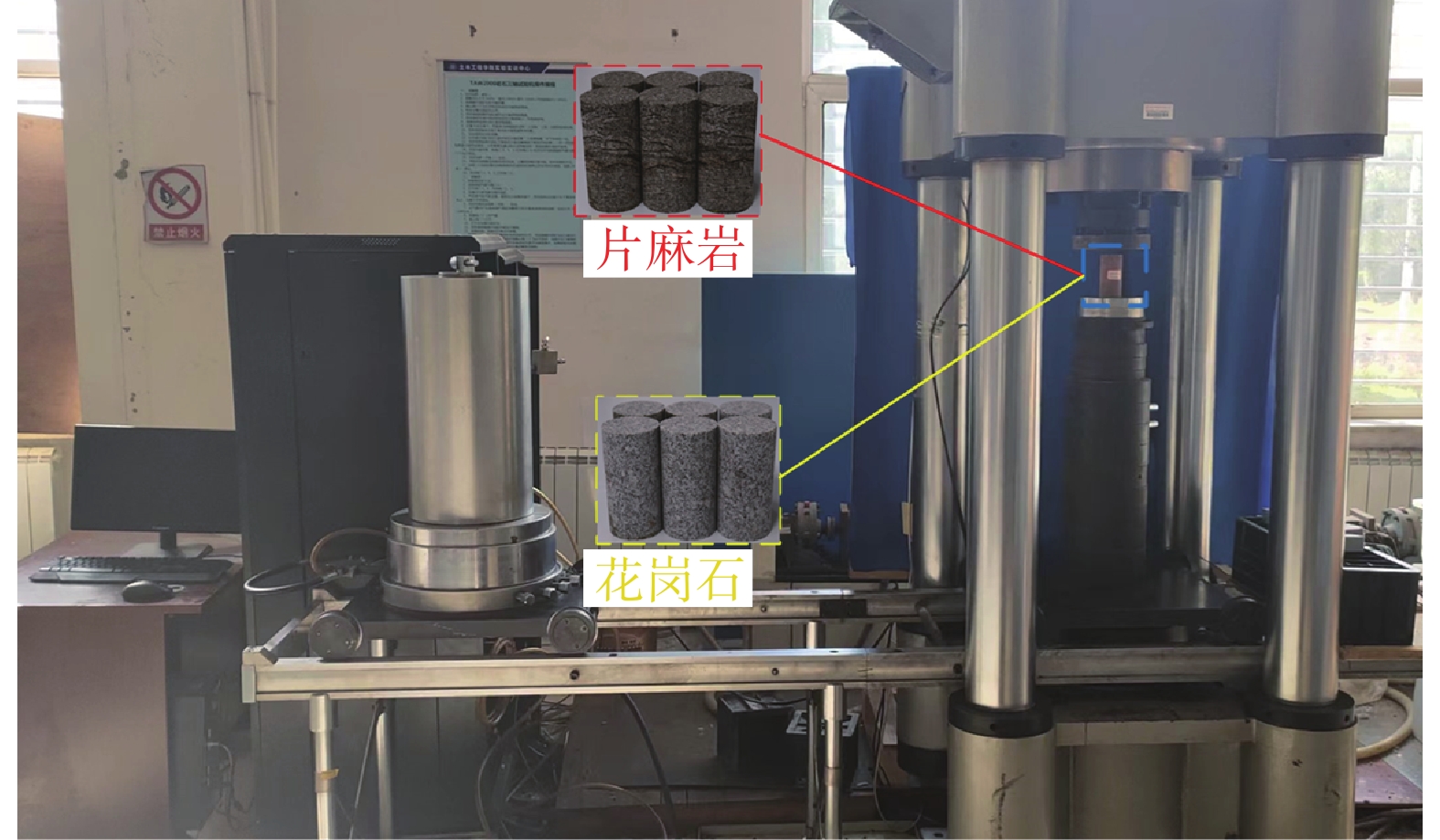


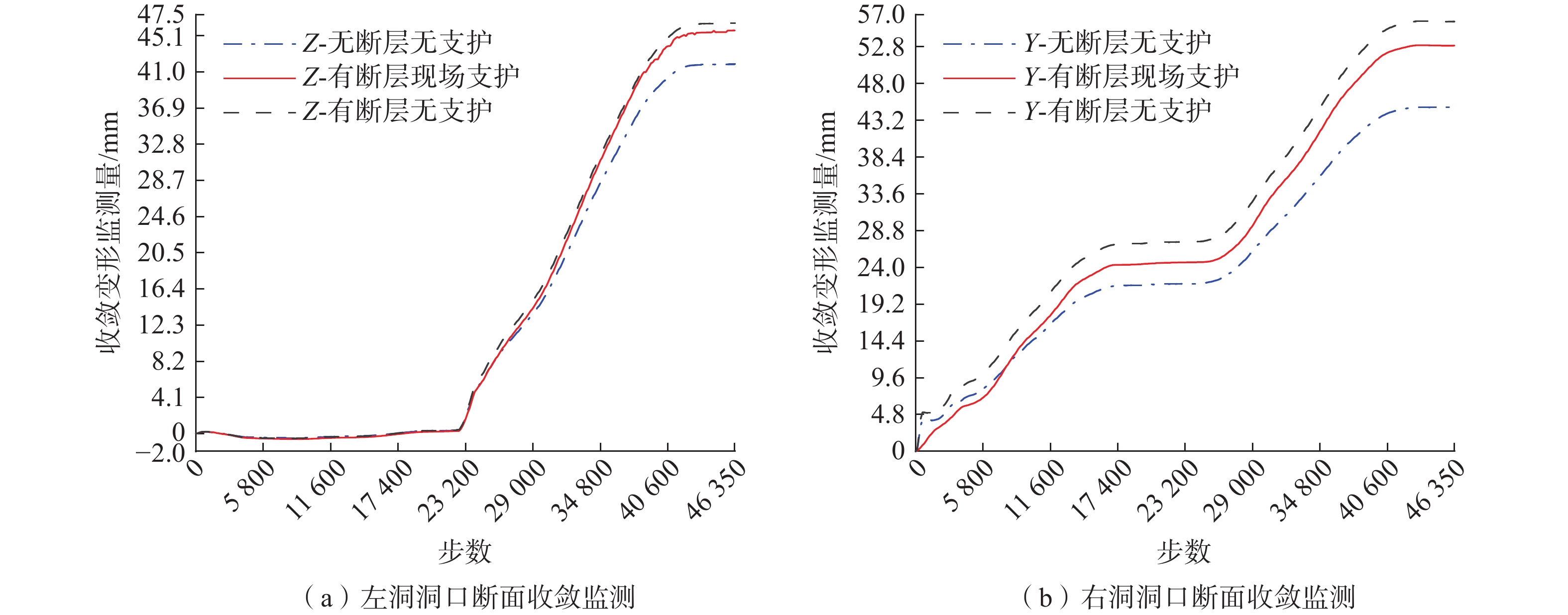

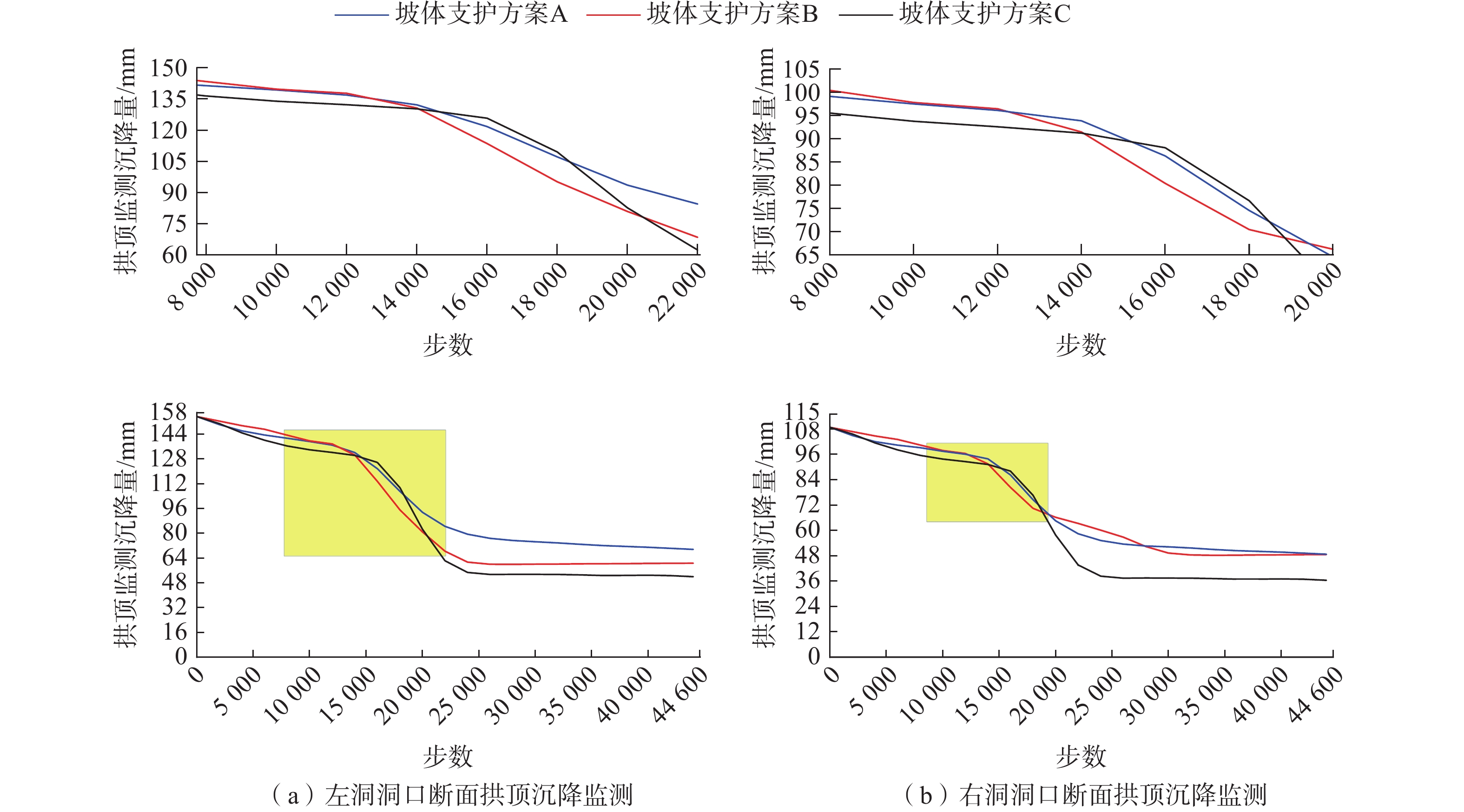
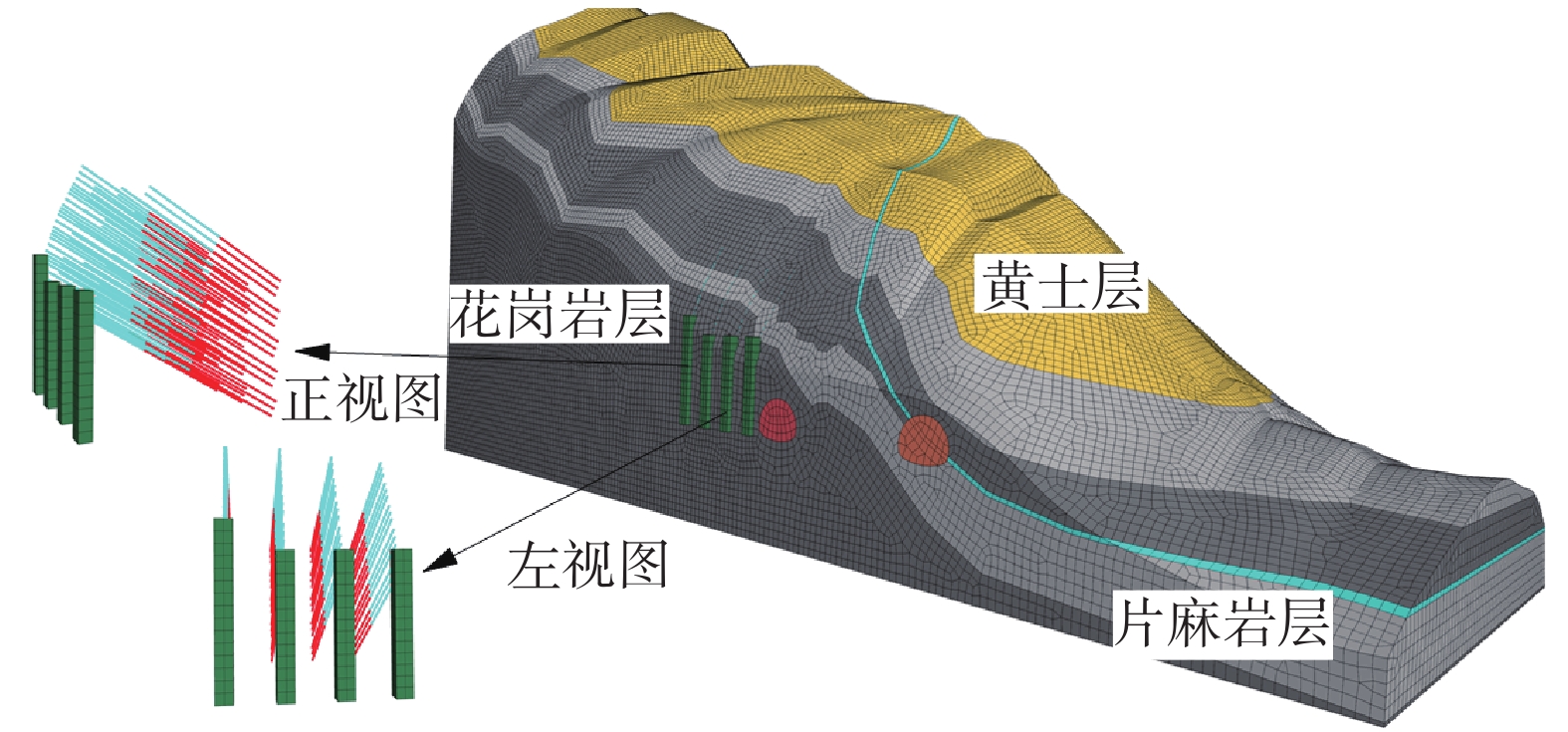


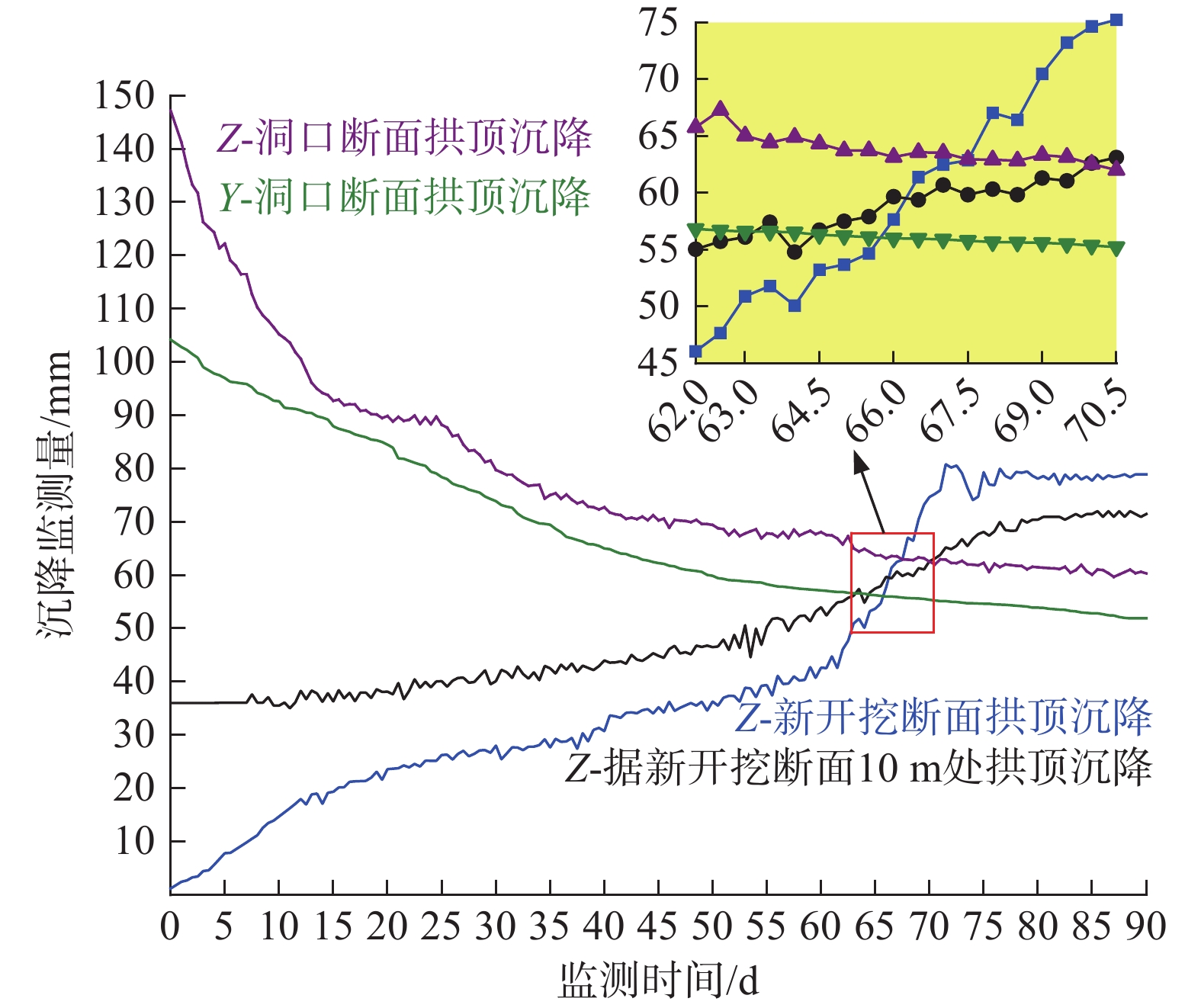
 邮件订阅
邮件订阅 RSS
RSS